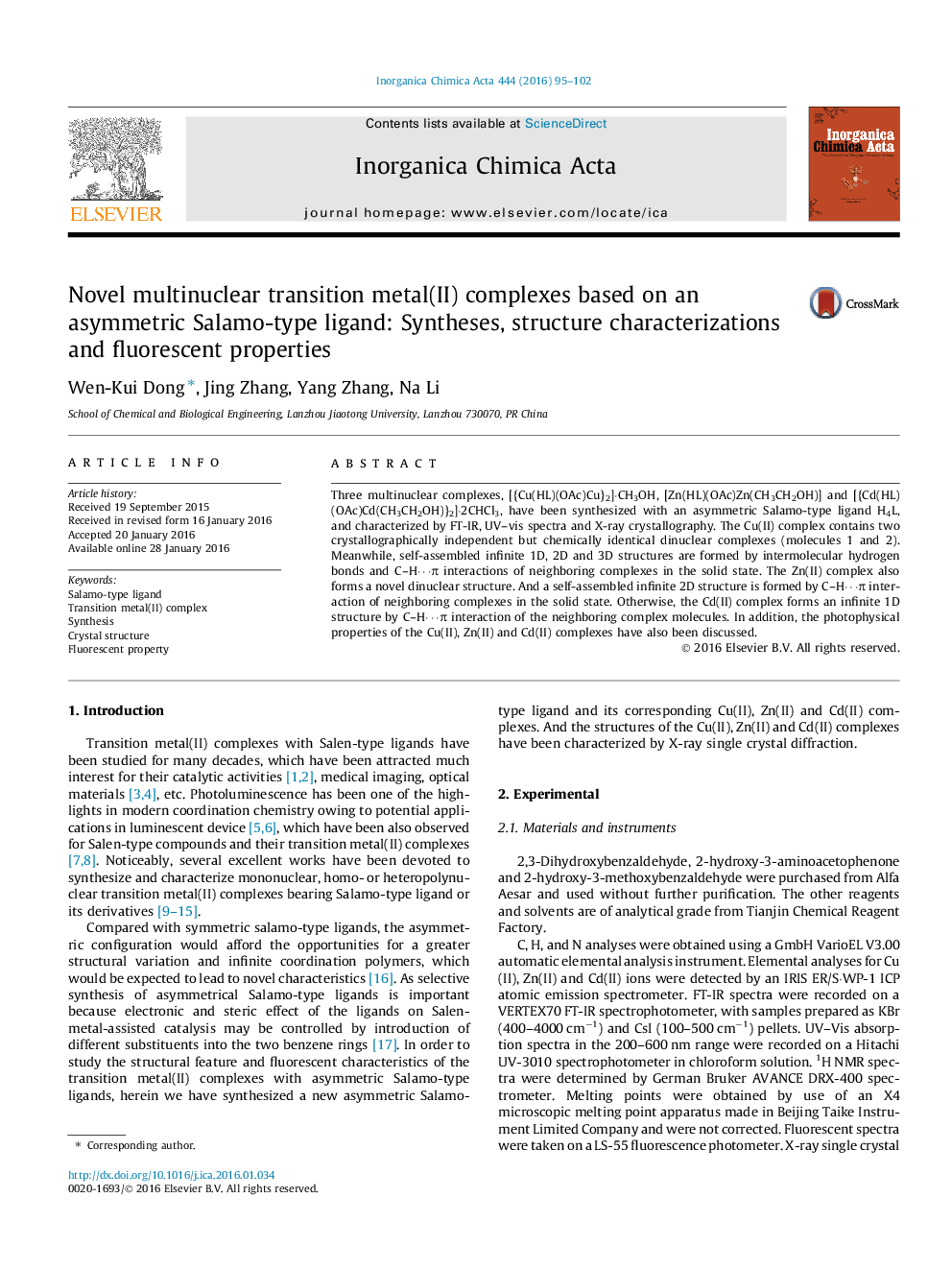| کد مقاله | کد نشریه | سال انتشار | مقاله انگلیسی | نسخه تمام متن |
|---|---|---|---|---|
| 1312009 | 1499145 | 2016 | 8 صفحه PDF | دانلود رایگان |

• A new asymmetric Salamo-type ligand H4L has been synthesized firstly.
• Three novel Cu(II), Zn(II) and Cd(II) complexes have been synthesized and characterized structurally.
• The photophysical properties of the Cu(II), Zn(II) and Cd(II) complexes have also been discussed.
Three multinuclear complexes, [{Cu(HL)(OAc)Cu}2]·CH3OH, [Zn(HL)(OAc)Zn(CH3CH2OH)] and [{Cd(HL)(OAc)Cd(CH3CH2OH)}2]·2CHCl3, have been synthesized with an asymmetric Salamo-type ligand H4L, and characterized by FT-IR, UV–vis spectra and X-ray crystallography. The Cu(II) complex contains two crystallographically independent but chemically identical dinuclear complexes (molecules 1 and 2). Meanwhile, self-assembled infinite 1D, 2D and 3D structures are formed by intermolecular hydrogen bonds and C–H⋯π interactions of neighboring complexes in the solid state. The Zn(II) complex also forms a novel dinuclear structure. And a self-assembled infinite 2D structure is formed by C–H⋯π interaction of neighboring complexes in the solid state. Otherwise, the Cd(II) complex forms an infinite 1D structure by C–H⋯π interaction of the neighboring complex molecules. In addition, the photophysical properties of the Cu(II), Zn(II) and Cd(II) complexes have also been discussed.
An novel asymmetric Salamo-type ligand H4L and its three novel supramolecular multinuclear Cu(II), Zn(II) and Cd(II) complexes have been synthesized and characterized by FT-IR, UV–vis spectra and X-ray crystallography. The obtained crystal structures are very interesting. In addition, the photophysical properties of the Cu(II), Zn(II) and Cd(II) complexes have also been discussed.Figure optionsDownload as PowerPoint slide
Journal: Inorganica Chimica Acta - Volume 444, 1 April 2016, Pages 95–102